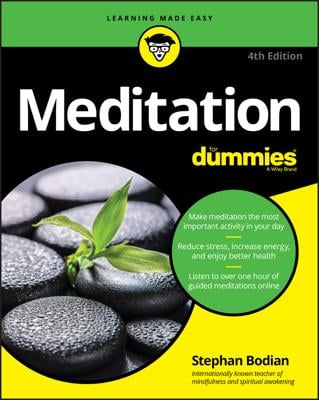Many people ask what they should do with the parts of their body that are generally restless during meditation. This is especially difficult for beginners. Some people become obsessed with the “right” positioning of their hands, mouth or eyes. Once you forget about them, they won’t bother you again.
To save you similar confusion about your eyes and other salient body parts, consider the following guidelines:
Eyes: Initially, you need to decide whether you want to sit with your eyes closed, wide open, or half open. Then you can just forget about your eyes and let them do what they do. Each option has its pros and cons.
Closed: Keeping your eyes closed draws your attention away from external distractions and helps you focus on your inner experience. Unfortunately, it also encourages daydreaming and thinking.
Wide open: Keeping your eyes wide open is the most difficult position because it expands your awareness to include the full range of experiences. The good news is that this position makes it easier for you to rise from a sitting position and extend your meditation. The bad news is that without enough concentration, you can easily be distracted by anything that crosses your field of vision.
Half open: It is generally recommended that people sit with their eyes half open, Zen style, gazing with soft focus at a spot on the floor about 4 or 5 feet ahead. If you’re feeling distracted, you can close your eyes a little more; if you’re feeling sleepy or dull, you can open them wider. And if you find yourself staring, just relax your eyes and soften your focus.
Hands: You can put your hands pretty much anywhere they feel comfortable, as long as you keep them there for the entire sitting period. Seasoned meditators generally put their hands one of two places:
In the lap: Try simply clasping your hands in your lap. Or you can attempt the more formal Zen mudra (hand position) in which your left palm is placed on top of your right about 4 or 5 inches below your navel, with your thumbs lightly touching near your navel, thereby forming an oval with your fingers.
On the thighs: Simply rest your hands on your thighs, palms down. Or turn them up and, if you want, touch your index finger to the thumb of each hand, forming an oval in a traditional yoga mudra.
Mouth: Keep it gently closed (but not clenched) as you breathe through your nose, with your tongue lightly touching the roof of your mouth so it doesn’t wander all over the place as tongues are wont to do.

